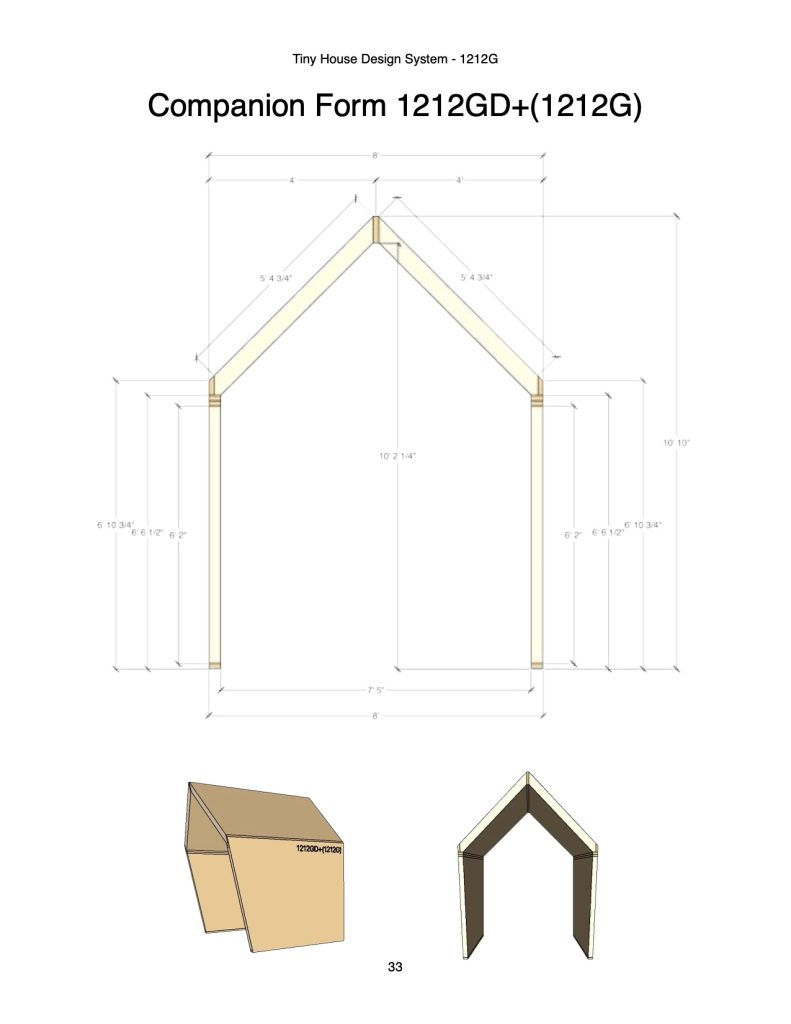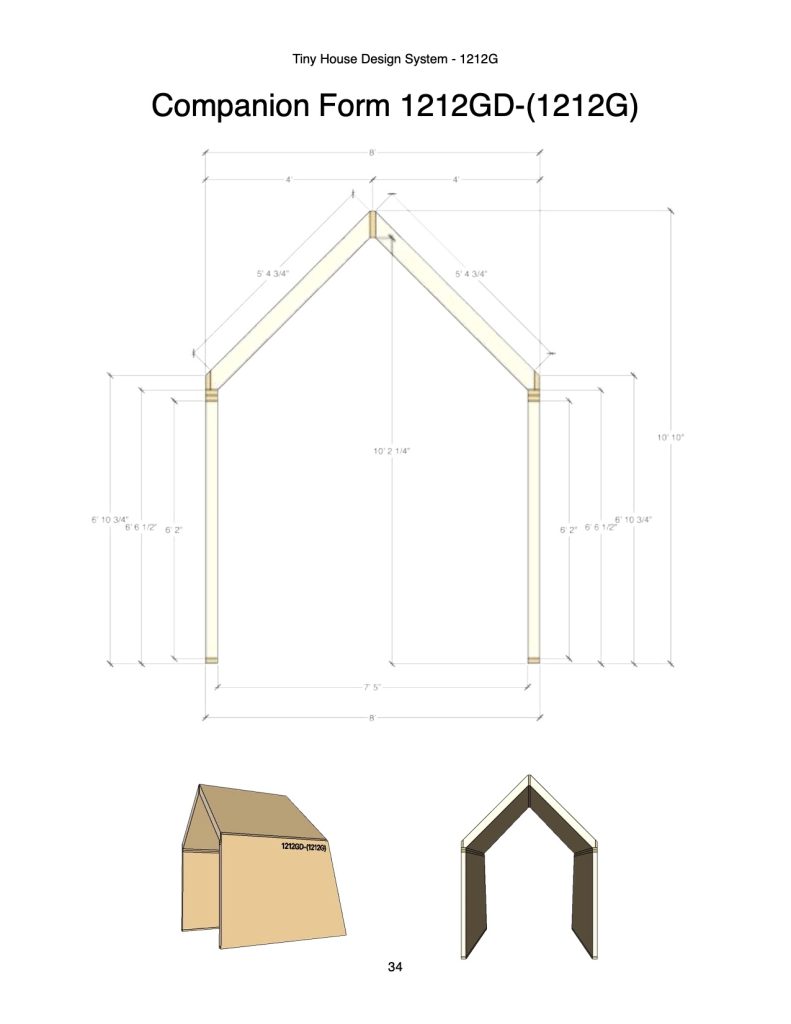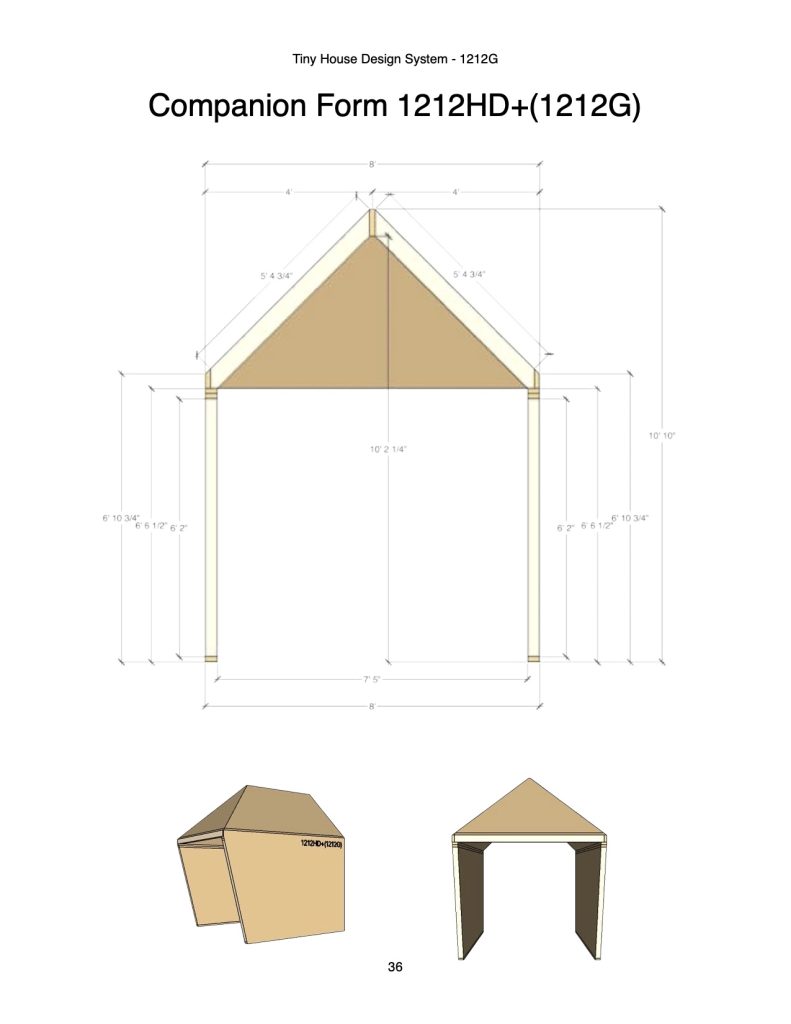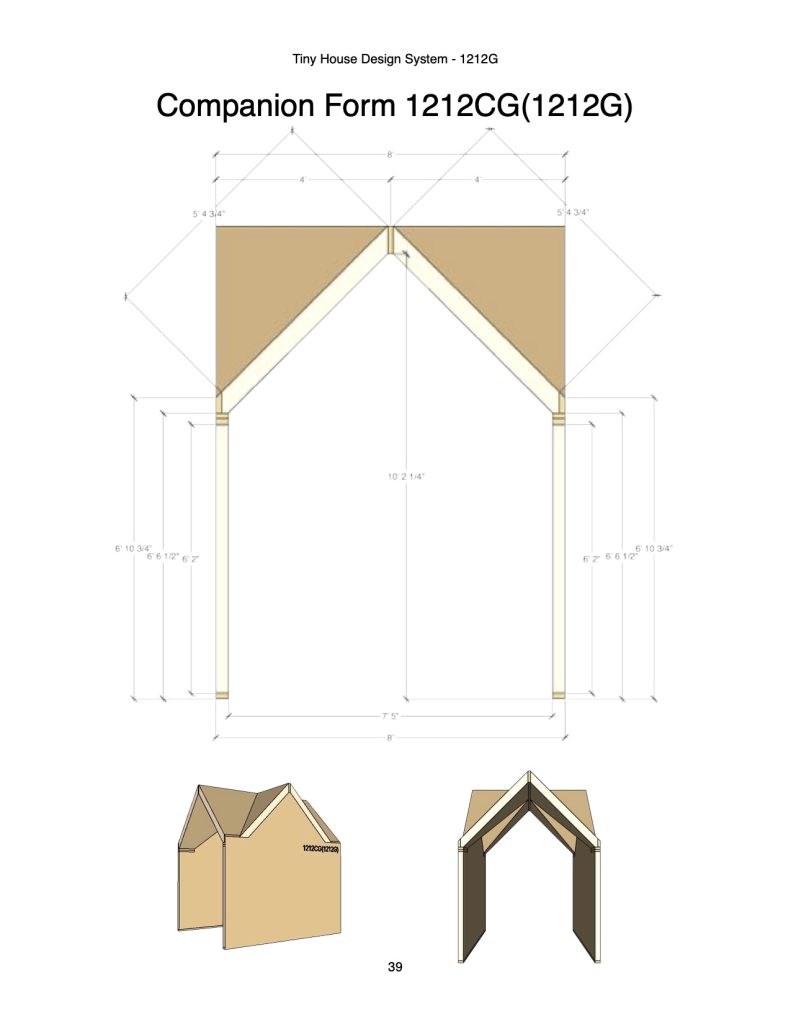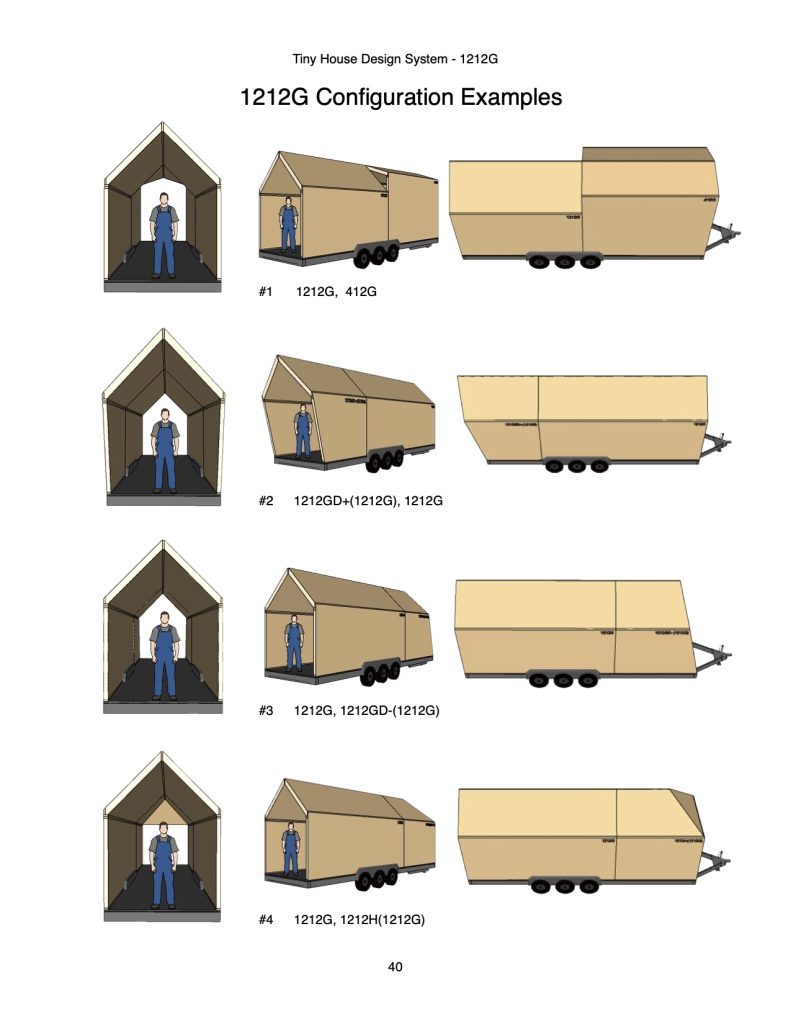The key to unlocking every tiny house design
Empowers You To Design Your Own Tiny House
An essential resource for owner-builders and professionals—design tiny houses from simple to complex, traditional to contemporary.
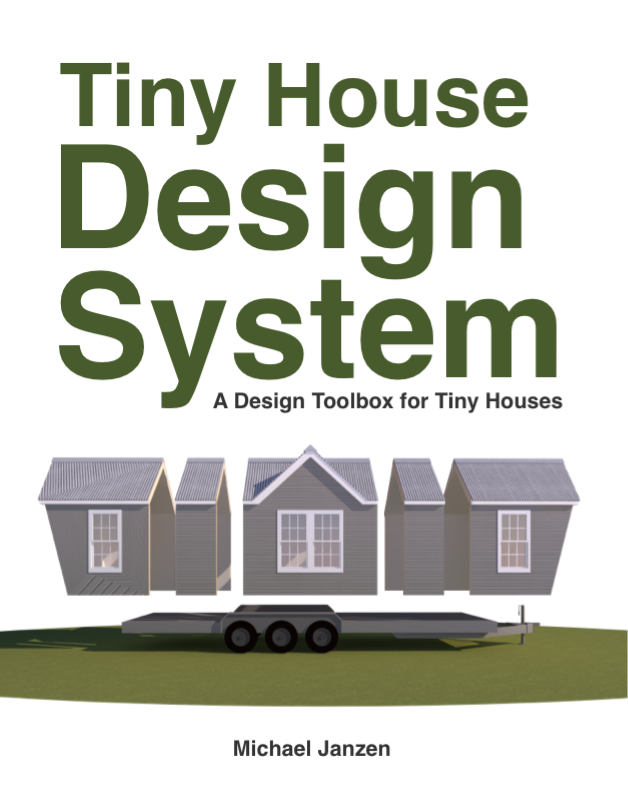
As Easy as Playing with Blocks
In 2017, I published my second book, which used an early version of my tiny house design system to draw the illustrations. Since then, I’ve been refining and cataloging the results, ready for you to use for your tiny house designs.
The Tiny House Design System is a tool for quickly and easily developing your tiny house design ideas. Use it to design tiny houses from simple to complex, traditional to contemporary.
New owner-builders and professionals will find it an essential resource for composing designs and building homes, but no design experience is needed.
Inside are dimensioned cross-section drawings for hundreds of tiny house forms. Many house forms are compatible and fit together, empowering you to combine shapes without dramatically increasing the construction complexity. Combine the forms like building blocks to compose the unique tiny house of your dreams.
You’ll find common house forms like gable, saltbox, and shed-roofed tiny houses. You’ll also see house forms like gambrel, arched, clerestory, asymmetric, and wedge.
Each primary form is available with various roof pitches, and you’ll only find house forms that work. I omitted steep or shallow roof pitches when they weren’t practical.
The result is a standard set of house forms that work together. These establish the basic form of the tiny house and work alone or with compatible forms. Each primary form has a set of companion forms designed to fit.
One of the first design decisions you’ll make when selecting which house forms to use is to consider the specific needs and requirements when deciding on a roof design, including factors such as occupant needs, aesthetic preferences, location, climate, and budget.
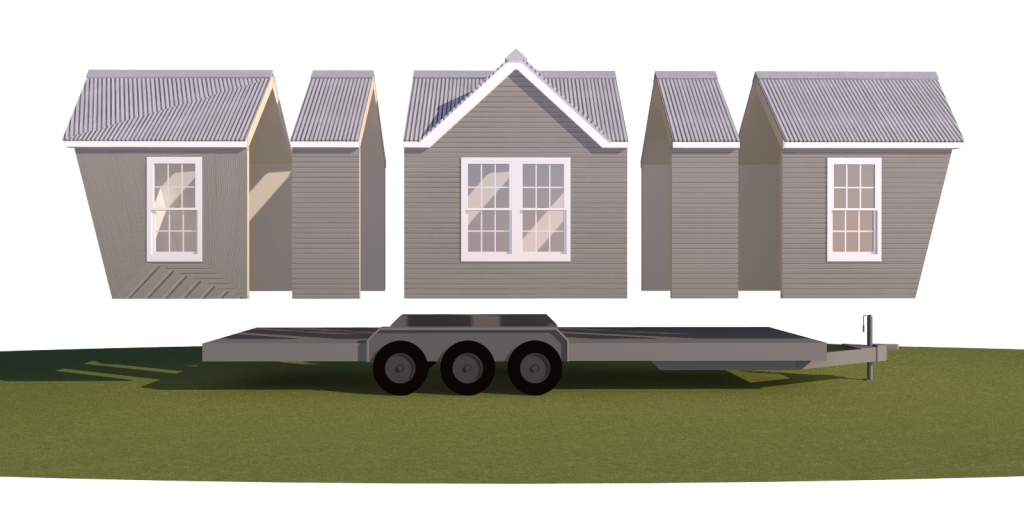

Sample Chapter
Over 500 pages of dimensioned drawings and sample configurations. The first chapter for the 1212G (12:12 pitch gable roof) is shown here. These drawings are the key to creating a set of plans. All the essential dimensions can be extrapolated from the cross-section drawings. Since the forms have compatible dimensions it’s easy to combine them to create designs traditional or unique designs.
Versatile and Easy to Learn

I devised a simple naming convention that is easy to learn and identify the house forms. Form names begin with a number representing the slope, followed by a letter representing the roof type. For example, a 1212G is a 12:12 gable roof. 12:12 means a slope that rises three vertical units for every 12 horizontal units, and the letter G represents a gable roof.
Each primary form has a set of companion forms that fit it perfectly, meaning the wall height of the companion matches its primary form. The companion forms use the same naming convention as the primary forms with a slight twist; they also include the parent form’s name in parenthesis after the companion’s name.
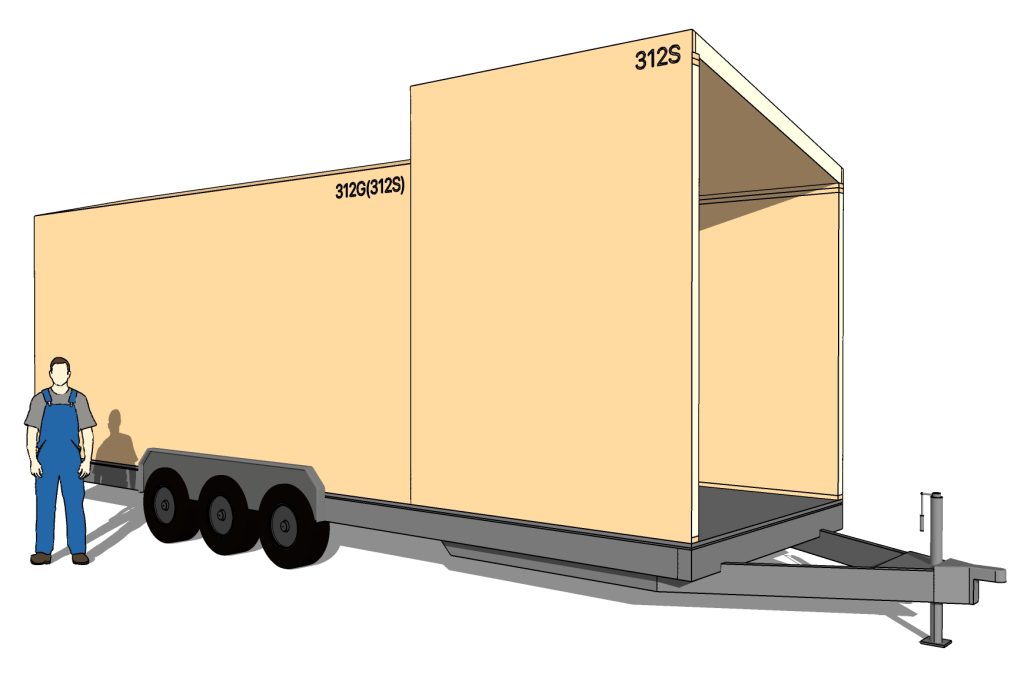
For example, a 312G(312S) is a 3:12 gable roof with sidewalls that are the right height to sit perfectly beside a 312S (3:12 pitch shed roof). When you see the parenthesis, it shows that the particular form is a companion to the primary form shown in the parenthesis.
Many of the primary forms are also compatible with each other because the overall height is the same. This makes it easy to combine any of the gable roof primary forms to create house designs that are more visually interesting and functional.

For example, you may like the steep pitch and appearance of a 1012DG (10:12 pitch dutch gable) but want the higher loft ceiling height found under the 312G (3:12 pitch gable roof) and the aerodynamics of the 1012HD-(1012G) (10:12 pitch hip roof with inward sloping wall).
Combining the three forms create a traditional front door at the back of the house under the 1012DG, a sleeping loft under a centered 312G section, and a sloping walled 1012HD- on the trailer tongue side of the house for improved aerodynamics.

The plus (+) or minus (-) denotes if the wall slopes 14° out or in from the house. The walls that fill these spaces can be sloping walls for aerodynamics or vertical walls that provide covered or open exterior porch space.
The only caveat I want to share about the outward sloping walls is that when used on the trailer tongue side of the house (seen below), the tow vehicle may only clear the structure on sharp turns if it has a low deck or truck bed, so plan ahead.

Except for the wedge, the length of each section is customizable. To make it easier to build, keep your design in 2-foot increments, so your framing is easier to keep on 24-inch centers.
Maintaining a 2-foot grid also aids in balancing the composition of the overall design both vertically and horizontally.

“You may never buy another tiny house plan. The Tiny House Design System empowers you design your bespoke tiny house. It takes owner-designed tiny houses to the next level.”
Michael Janzen



